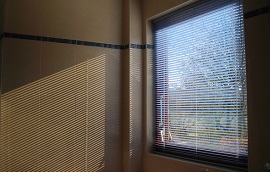Window coverings are more than merely a home decor accessory. While your window coverings can complement the style and color scheme in the room, they are also an essential component of reducing heat loss and gain inside your home. The right covering can increase your HVAC system efficiency and reduce your energy costs. Therefore, it is vital to have an understanding of the types of window covering options available and how to choose the right option for your home.
Types of Window Coverings Offering Energy Savings:
There are several different types of window coverings that can impact the energy efficiency of your HVAC system. Even standard drapes can help to reduce your heat loss and gain. If you choose draperies that hang floor to ceiling and have interlining and lining, they will contribute to protecting your home from hot summer temperatures. Drapes made of a heavy material can also be beneficial to keep the room feeling warm and keep out the cold. Drapes are only effective when they are closed, so they will block out the view and natural light. Fortunately, there are ways to effectively use your drapes to improve heat efficiency. For example, it is a good idea to close the drapes on south-facing windows during summer. This shades the room and prevents the full heat of the sun from entering the room.
Shutters and shades can also be employed in this way. Honeycomb shades are designed to trap air and create a layer of non-heat conducting material in the gap between the room and the window. Plantation shutters can be particularly attractive, yet can be tightly fitted to the window frame, blocking heat transfer. Unfortunately, both these methods still require that they are closed to achieve energy savings.
Fortunately, there is a method that can be used without impacting the amount of natural light entering the room. Window film is a thin sheet of flexible plastic, designed to be applied directly to the glass. This not only allows natural light into the room, but prevents heat energy from being transferred into or out of the home. The most important factor to remember if you are using window film is that it is effective only against temperature transfers on the glass. If you want to ensure optimum energy savings, you will need to ensure that any insulation defects around the frame are repaired to minimize heat transfer.
Factors to Consider When Choosing Window Film:
Before you purchase window film, there are several factors that are worth considering achieving optimum energy savings. Firstly, you need to consider the rate of UV rejection. This number represents the level of protection offered from UV rays. The higher the number is, the greater the level of protection. The product should also offer a good level of visible light reflectance. This figure is used to demonstrate how much shine and glare affects the appearance of the glass. The film should provide decent light transmission. For example, if a film has a light transmission rate of 49%, it will offer a good balance of visibility and glare reduction. Finally, the film should have a high rating for Total Solar Energy Rejection. This figure reflects the ability of the film to keep UV, visible light and heat out.
